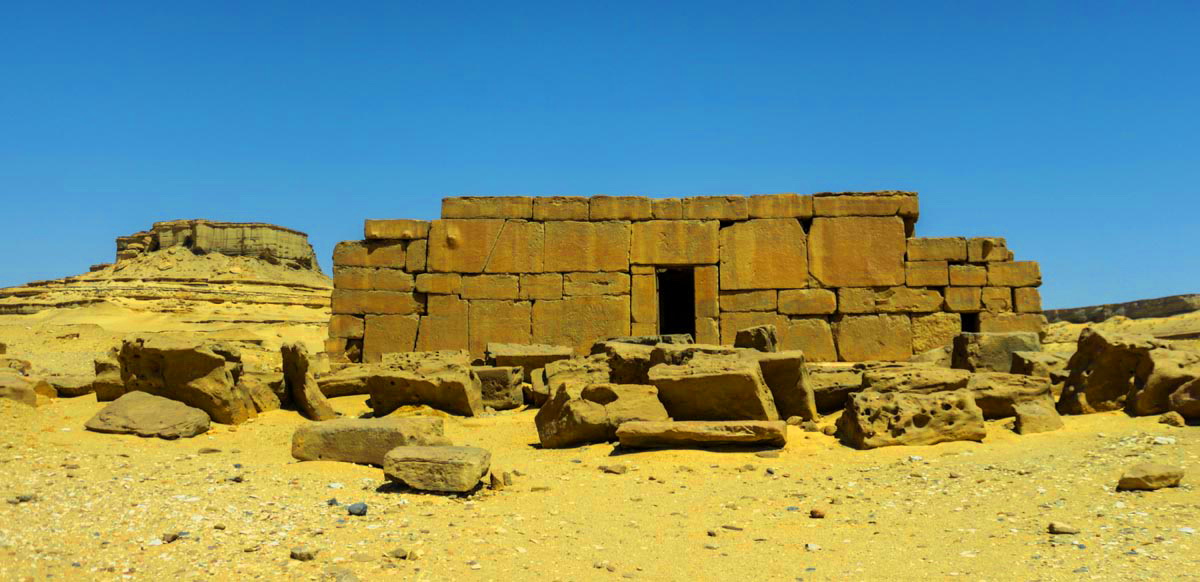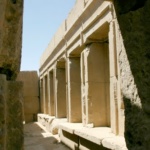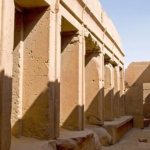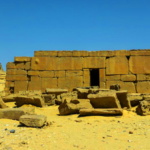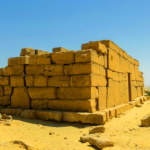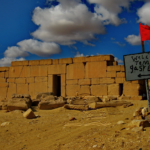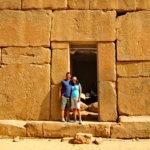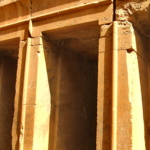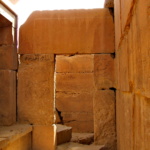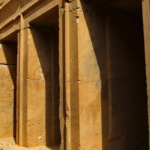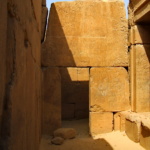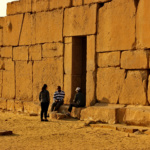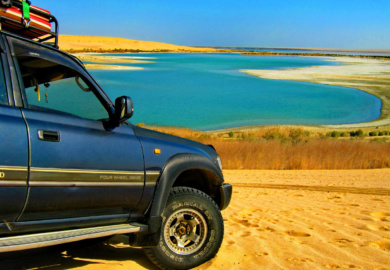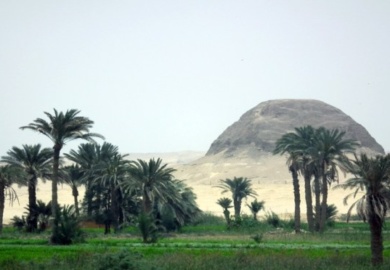Qasr El Sagha temple
The site can be reached via a track from Kom Ushim, and is about 25 km from the main road and discover authentic desert adventure. Above the northern shore of Birket Qarun, in a now deserted and inhospitable area at the foot of the desert escarpment towards Gebel Qatrani, is a small uninscribed temple known locally as Qasr el-Sagha.
In remote antiquity a forest grew on the escarpment north of the site – petrified remains can still be seen and it is thought that Birket Qarun (ancient Lake Moeris) once extended its northern shore close to the temple in the days when the lake was much larger. Qasr el-Sagha rests on a level platform on the side of the escarpment and was first published by Schweinfurth in 1892 and later visited by Petrie.
The date of the temple is a source of debate among scholars; but its plan suggests that the structure was built no later than the Middle Kingdom. It’s architecture, however, was interpreted by early explorers as being in the style of Old Kingdom structures. The temple was constructed of limestone blocks of different sizes, which fit tightly together without the use of mortar and with oblique corner joints.
The temple was never completed and the walls were left undecorated. The interior contains seven small chambers or shrines and an offering hall. There is also a ‘blind room’ which is completely enclosed and appears to have no entrance.
On the flat plain to the south of Qasr el-Sagha there are several sites of prehistoric villages whose inhabitants seem to have existed by hunting, farming and fishing. Very recent, tombs found with evidence of ancient Egyptians cult practice.

